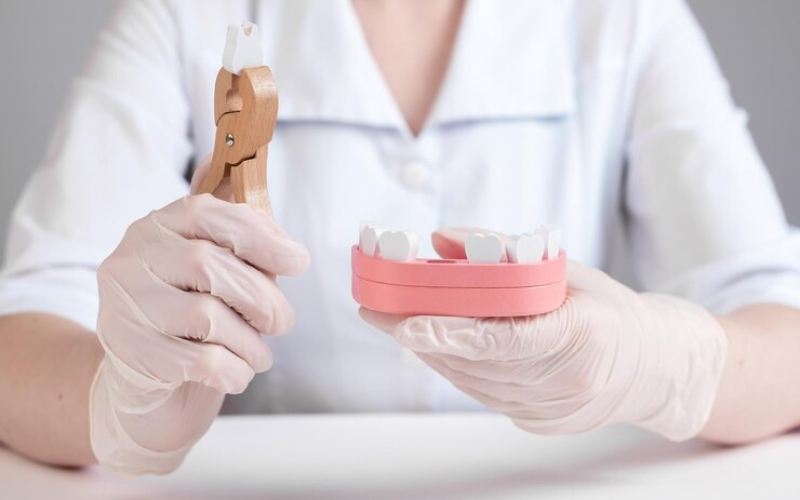Wisdom teeth removal is a common dental procedure that many individuals undergo, typically in their late teens or early 20s. While the surgery is often straightforward, the recovery process is crucial for preventing complications and ensuring quick healing.
To help you navigate your post-surgery experience, this guide will offer a fresh, structured approach to understanding the most effective recovery tips.
Understand The Healing Process: What To Look For?
After wisdom teeth removal, the body begins the healing process immediately. Knowing what to expect can help you manage discomfort and avoid unnecessary stress.
Initial 24 Hours After Surgery
- Swelling & Bleeding: It’s common to experience some swelling, bruising, and minor bleeding.
- Pain Management: The dentist or oral surgeon will usually prescribe pain medication or recommend over-the-counter options.
- Drowsiness: If you’ve undergone sedation, expect some drowsiness and plan for someone to accompany you home.
2-3 Days Post-Surgery
- Swelling Peaks: Swelling typically peaks during the first two to three days.
- Bruising May Appear: Bruising around the cheeks or jawline might appear as swelling subsides.
- Pain Lessens: Pain and discomfort should start to ease, especially if following proper aftercare instructions.
1 Week Post-Surgery
- Improved Mobility: You should notice a significant decrease in pain, swelling, and bruising.
- Stitches Dissolve: If dissolvable stitches were used, they will likely start to dissolve within a week.
- Return to Routine: Most patients feel comfortable resuming their normal activities around this time, though some caution is still necessary.
Essential Recovery Tips for Quick Healing
Achieving a swift and smooth recovery after wisdom teeth removal depends largely on your adherence to post-surgical guidelines. Here are key tips to ensure fast healing:
1. Manage Swelling & Discomfort with Cold Therapy
Cold compresses are your best friend in the first 48 hours post-surgery.
- Apply ice packs: Use an ice pack wrapped in a cloth on the outside of your cheek for 15-20 minutes at a time.
- Switch to warm compresses: After the first two days, you can switch to warm compresses to promote blood flow and reduce any remaining stiffness.
2. Stay Hydrated But Avoid Straws
Staying hydrated is critical for healing, but certain habits can interfere with the recovery process.
- Drink plenty of water: Staying hydrated helps flush out toxins and promotes tissue healing.
- Avoid using straws: The sucking action creates pressure that can dislodge blood clots, causing a painful condition known as dry socket.
3. Stick To a Soft Food Diet

Choosing the right foods is crucial for promoting healing while minimizing discomfort.
- Best foods: Smoothies, applesauce, yogurt, mashed potatoes, and broth.
- Foods to avoid: Crunchy, spicy, or acidic foods can irritate the surgical site and prolong healing.
4. Keep Your Mouth Clean—But Gently
Oral hygiene is vital post-surgery, but overdoing it can cause harm.
- Rinse gently with salt water: Start using a saltwater rinse (1/2 teaspoon salt in 8 ounces of water) 24 hours after surgery to keep the surgical site clean.
- Avoid brushing the surgical area: Wait at least 24 hours before brushing, and then be cautious to avoid the stitches and incision sites.
5. Take Medications as Directed
Medications prescribed by your oral surgeon play a critical role in managing pain and preventing infection.
- Pain management: Whether prescription or over-the-counter, take pain medication as advised to stay ahead of discomfort.
- Antibiotics: If prescribed antibiotics, complete the entire course to prevent infections from developing.
6. Avoid Vigorous Activity
Physical activity can increase blood pressure and dislodge clots, leading to prolonged bleeding or dry socket.
- Rest during the first few days: It’s important to minimize movement and avoid strenuous activities that could disrupt healing.
- Elevate your head: Use extra pillows to keep your head elevated when resting, which helps reduce swelling.
Tips for Preventing Dry Socket
Dry socket is one of the most common complications after wisdom teeth removal, occurring when the blood clot at the extraction site is dislodged or dissolved before healing is complete. To avoid this painful condition:
- Do not smoke: Smoking can interfere with blood clot formation, making dry socket more likely.
- Avoid drinking through a straw: The sucking motion can dislodge the clot.
- Steer clear of vigorous rinsing: Too much force during rinsing can also displace the clot.
Healing Timelines: What’s Normal and When To Call Dentist
Understanding the typical recovery timeline helps you know what’s normal and when to seek medical attention.
Day 1-3: Expect swelling, mild to moderate pain, and some bleeding. Using ice packs and prescribed medications should help manage these symptoms effectively.
Day 4-7: Swelling should start to decrease, and any bruising will begin to fade. Pain levels should also decrease, allowing you to reduce reliance on painkillers.
Week 2 and Beyond: By the second week, most patients feel much better and can return to normal activities. Lingering sensitivity around the extraction site may persist but should gradually improve.
When To Reach Out To Your Dentist?
While discomfort and swelling are normal, certain symptoms may indicate a complication, and you should contact your dentist if you experience:
- Excessive bleeding that doesn’t stop after applying pressure
- Severe, throbbing pain that doesn’t improve with medication (could indicate dry socket)
- Persistent fever or signs of infection (such as pus at the surgical site)
- Difficulty swallowing or breathing
Advanced Tips for Faster Healing
If you’re looking to speed up the healing process even more, here are some bonus recovery tips:
Consider Bromelain Supplements
Bromelain, an enzyme found in pineapples, has anti-inflammatory properties and may help reduce swelling. Talk to your dentist before taking any supplements post-surgery.
Increase Vitamin C Intake
Vitamin C plays a crucial role in tissue repair. Adding more vitamin C-rich foods to your diet can promote faster healing.
Sleep Well
Good quality sleep promotes faster recovery as it allows your body to focus its energy on repairing tissues. Stick to a routine and avoid sleep disruptors like caffeine.
Monitor Your Diet for Healing Nutrients
Incorporate foods that are rich in zinc, protein, and antioxidants to support tissue repair and strengthen your immune system during recovery.
Patience & Proper Care Are Keys To Quick Healing!
Recovering from wisdom teeth removal doesn’t have to be an arduous process. By following these structured and detailed tips—from managing swelling to sticking to a soft food diet—you can significantly shorten the recovery time and prevent complications.
Keep in mind that everyone heals differently, so patience is essential. However, if you notice anything unusual during your recovery, don’t hesitate to consult your dentist. Ultimately, the combination of proper care, rest, and adherence to post-surgery guidelines will ensure that you’re back to normal in no time.


